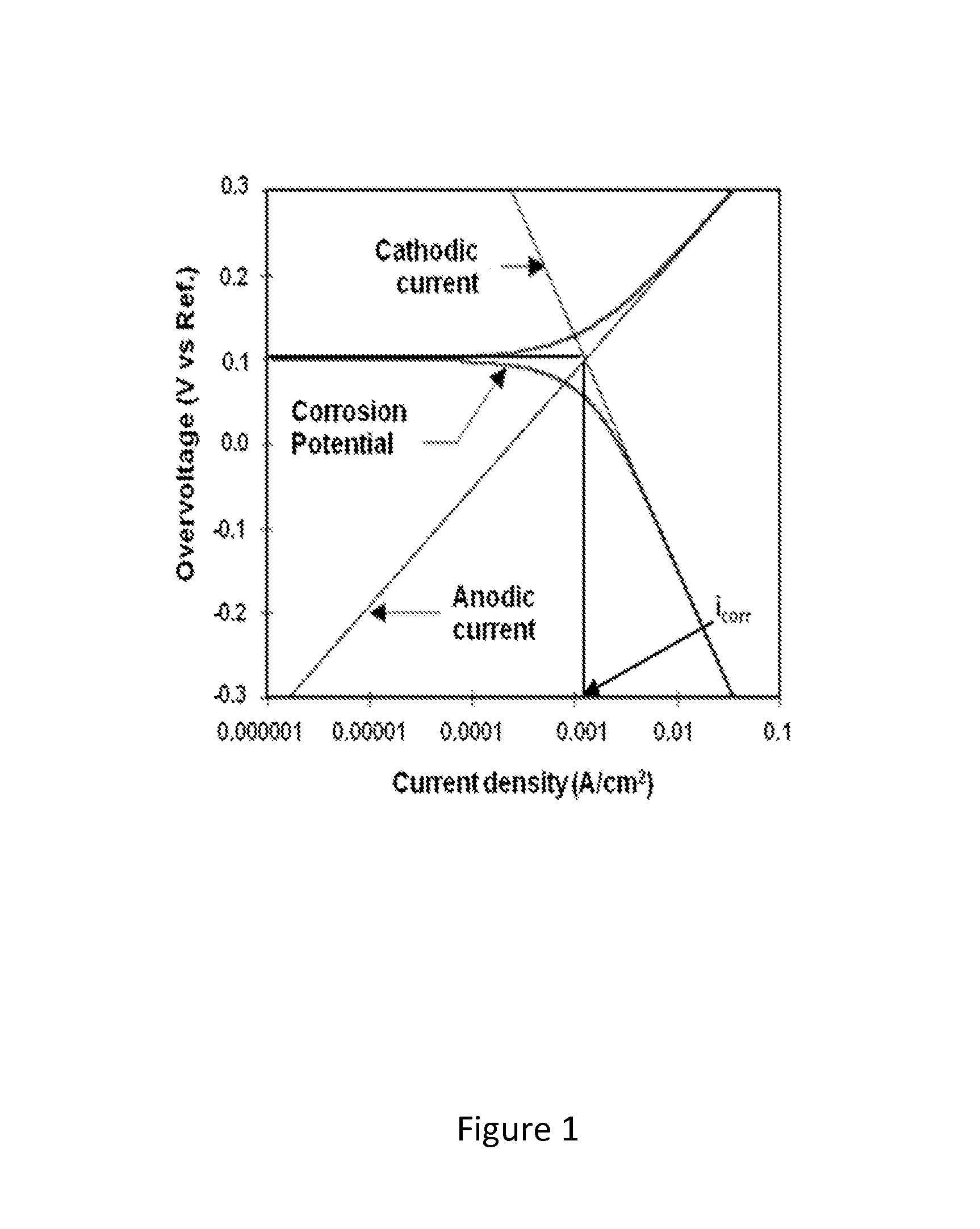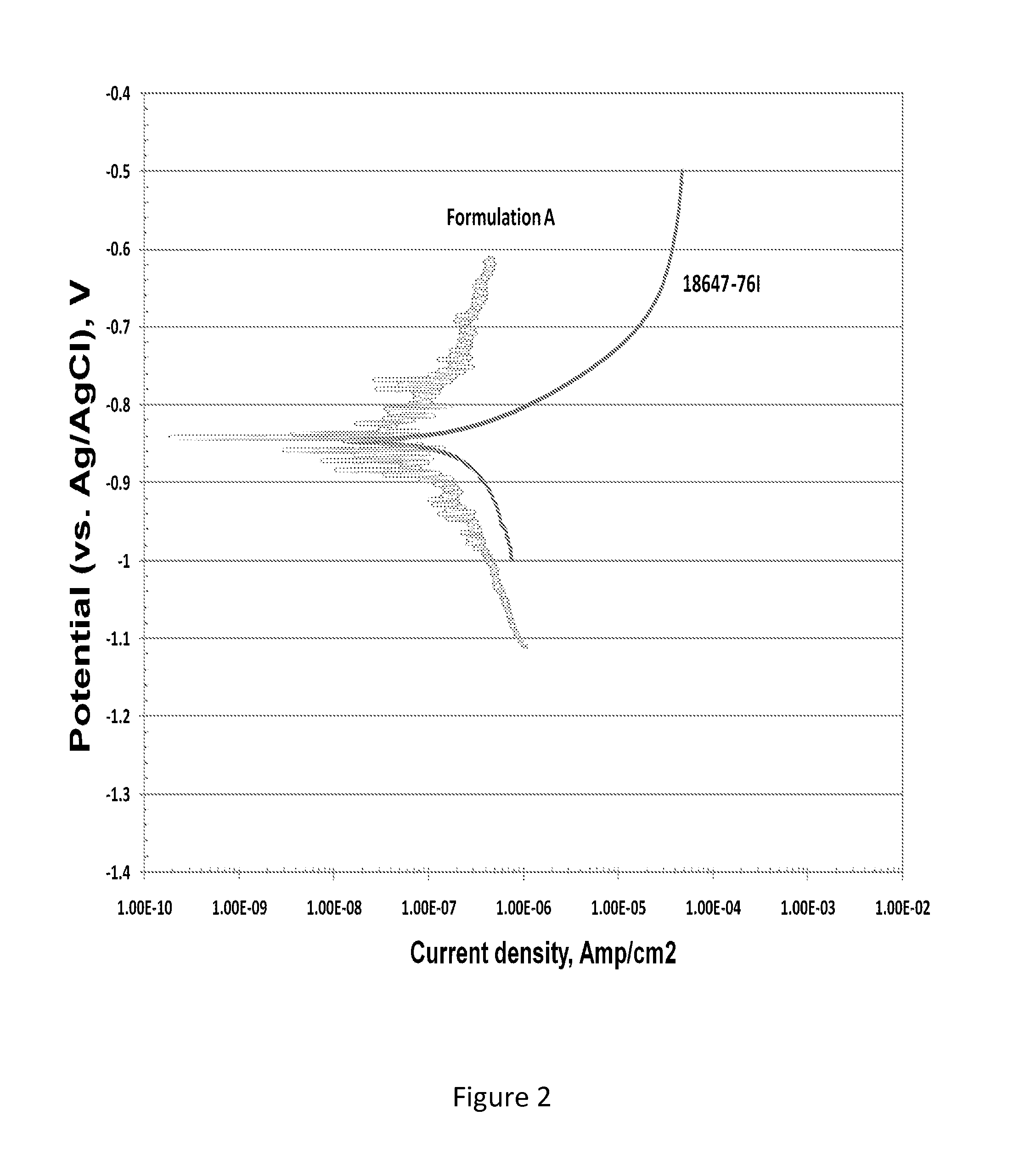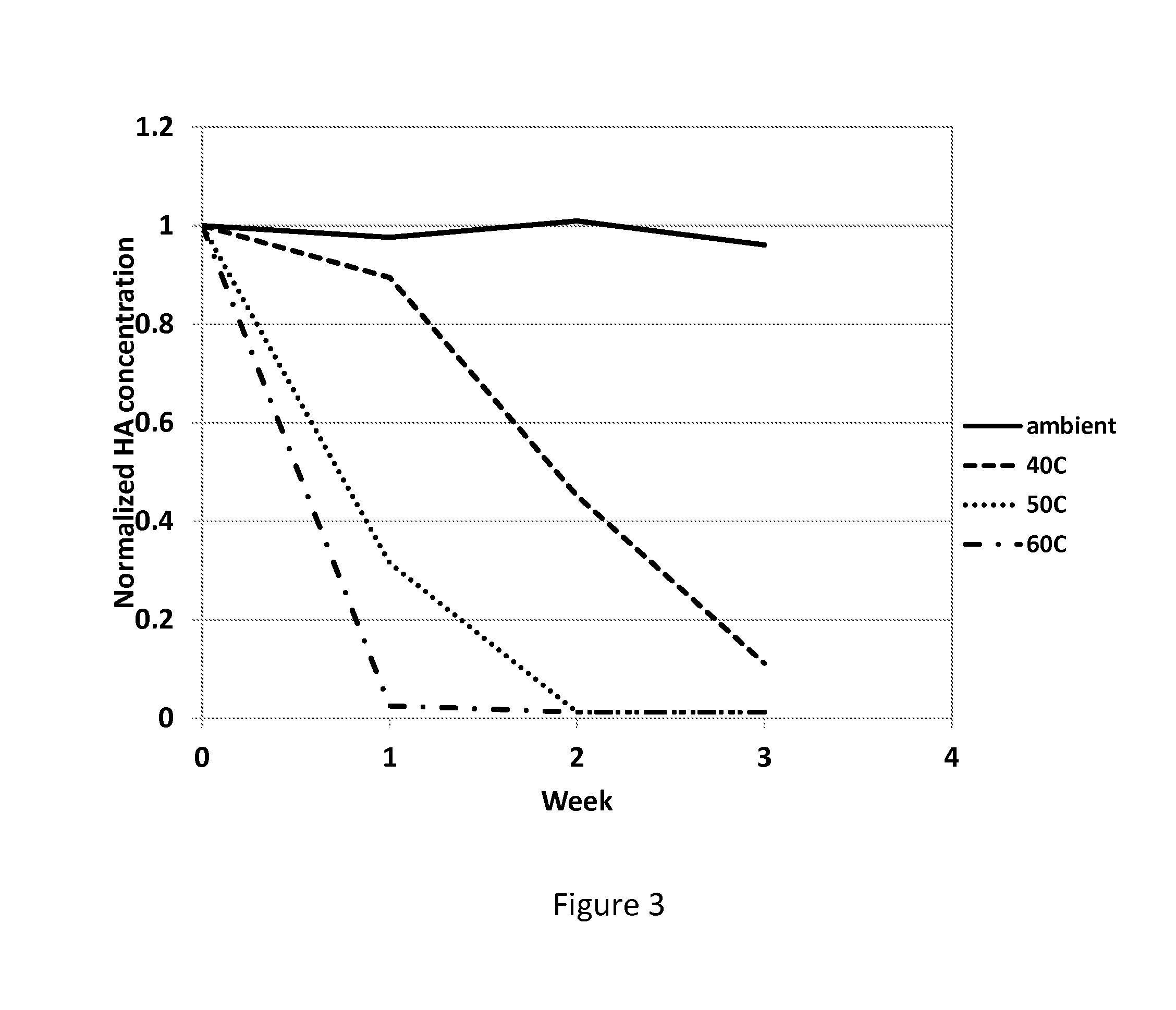Water-rich stripping and cleaning formulation and method for using same
a technology of water-rich stripping and cleaning formulation, applied in the direction of instruments, photomechanical devices, non-surface active detergent compositions, etc., can solve the problems of most susceptible to corrosion and/or etching, and the most susceptible to decomposition
- Summary
- Abstract
- Description
- Claims
- Application Information
AI Technical Summary
Benefits of technology
Problems solved by technology
Method used
Image
Examples
example 1
Catechol as Corrosion Inhibitor / Chelating Agent
[0027]Three formulations with differing levels of water, solvent, and hydroxylamine have been tested in this example. Catechol was used as the corrosion inhibitor. Catechol was selected for the experiments since it is a well-know corrosion inhibitor in the field and was a common component in the patents listed above.
[0028]Table 1 listed the aluminum etch rate of three formulations.
TABLE 1Aluminum etch rate for hydroxylamine formulations with catechol as the corrosion inhibitorFormulationFormulationAB18647-76IMonoethanol amine59.2065.0020.00hydroxylamine18.05107.5Catechol4.705.005.00Water18.052067.5Al etch rate (ER), Å / min117Temperature ° C. of ER,554545
[0029]Formulations A and B in Table 1 were lower in water (50%). Thus, formulations A and B were solvent-rich formulations. On the contrary, formulation 18647-761 contained higher level (>50%) water and lower level of monoethanol amine solvent (20% or less). Therefore, formulation 18647-7...
example 2
Electrochemical Characterization of Corrosion Rate Using Catechol
[0031]The characterization of corrosion rate was done by using Tafel analysis method well known in electrochemistry. FIG. 1 showed a typical plotted potential of an electrode relative to a reference against the logarithm of the corrosion current density.
[0032]The electrochemical potential versus current density for AI / 0.5 wt % Cu samples was measured in a series of water-rich, hydroxylamine cleaning formulations to characterize the corrosion inhibition of a variety of inhibitors.
[0033]Tafel plots of formulations using catechol as the corrosion inhibitor were shown in FIG. 2. Both formulation A (a solvent-rich formulation) and formulation 18647-761 (a water-rich formulation) were shown in FIG. 2 for comparison.
[0034]Formulation A had a lower corrosion current than formulation 18647-76I, indicating catechol as the corrosion inhibitor functioned better in formulation A. Again, catechol was shown to be a poor corrosion inh...
example 3
Hydroxylamine Stability in Water-Rich Formulations Using Catechol
[0035]Catechol and other dihydroxybenzenes have been used as chelating agents in several US patents specifically to control the stability of the cleaning formulation (see U.S. Pat. No. 5,911,835, U.S. Pat. No. 6,110,881, U.S. Pat. No. 6,319,885, U.S. Pat. No. 7,051,742, and U.S. Pat. No. 7,144,849). The primary role of the chelator is to stabilize the hydroxylamine in solution and prevent its degradation.
[0036]The measurements of hydroxylamine stability (or the decomposition of hydroxylamine) in water-rich formulation 18647-761 having catechol as chelating agent were carried out. More specifically, the normalize hydroxylamine concentration in solution in formulation 18647-761 as a function of time was measured for sample at room temperature, 40° C., 50° C., and 60° C. The results were shown in FIG. 3.
[0037]The results indicated that the amount of hydroxylamine remaining in solution decreased dramatically as the sample ...
PUM
| Property | Measurement | Unit |
|---|---|---|
| miscible | aaaaa | aaaaa |
| room temperature | aaaaa | aaaaa |
| room temperature | aaaaa | aaaaa |
Abstract
Description
Claims
Application Information
 Login to View More
Login to View More - R&D
- Intellectual Property
- Life Sciences
- Materials
- Tech Scout
- Unparalleled Data Quality
- Higher Quality Content
- 60% Fewer Hallucinations
Browse by: Latest US Patents, China's latest patents, Technical Efficacy Thesaurus, Application Domain, Technology Topic, Popular Technical Reports.
© 2025 PatSnap. All rights reserved.Legal|Privacy policy|Modern Slavery Act Transparency Statement|Sitemap|About US| Contact US: help@patsnap.com



